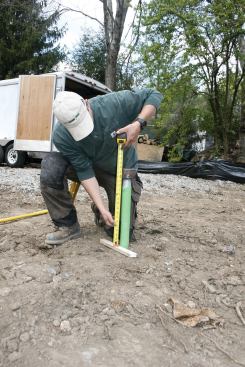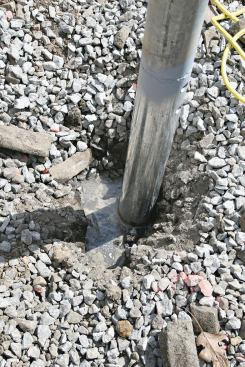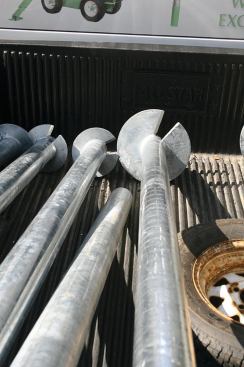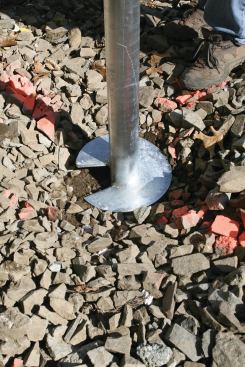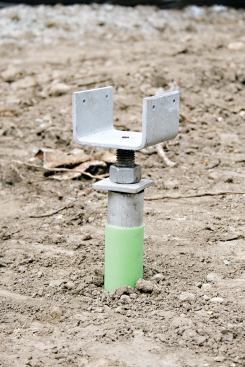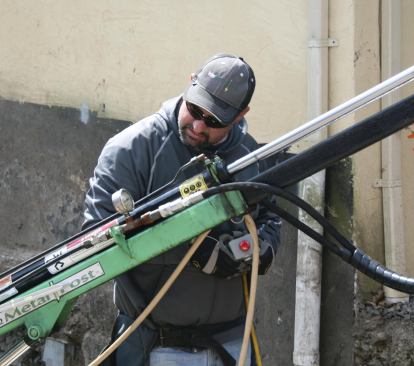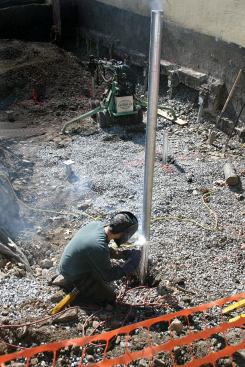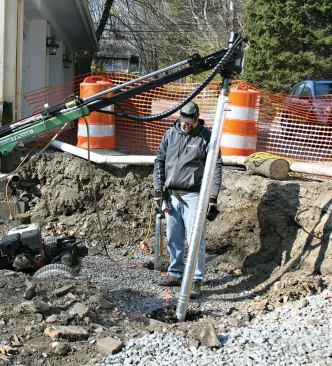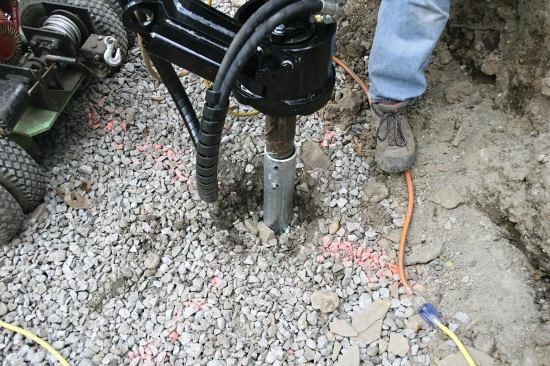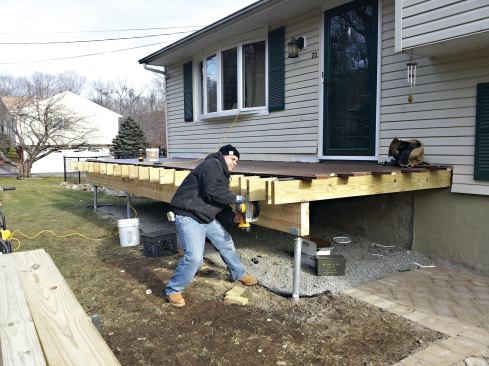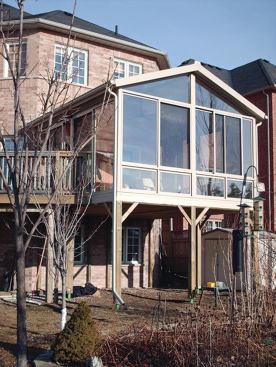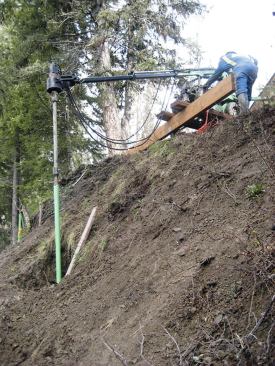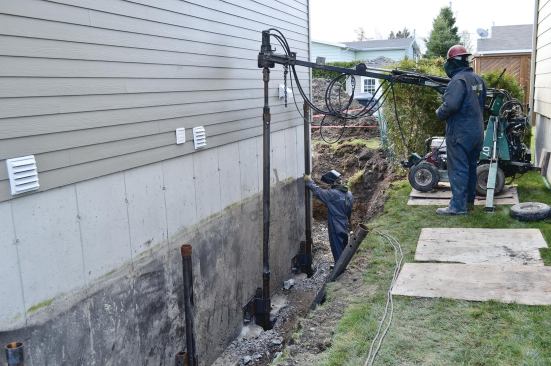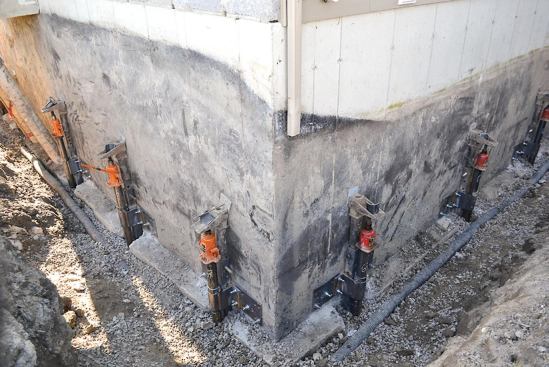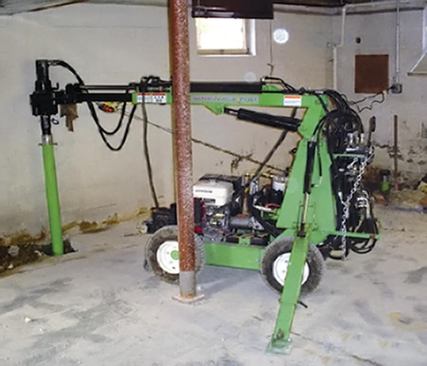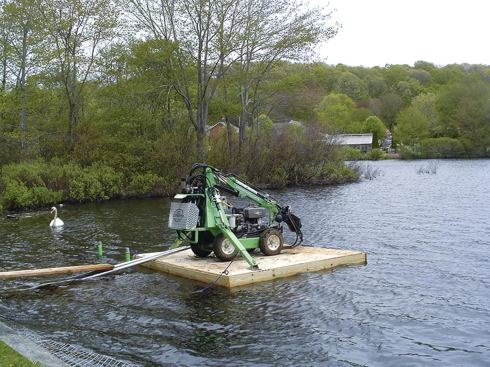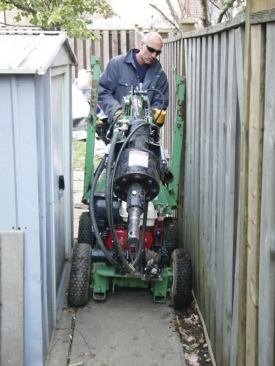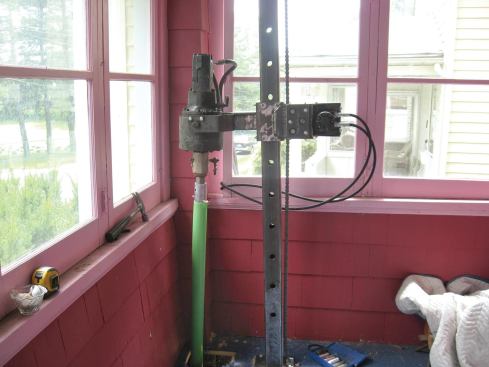Andy Engel
The height of the pile above grade is measured.
Engineered Support
For small jobs, we can usually specify the right size helical piers based on the loading of the structure, though a Techno Post engineer is always available for design help. On additions and other large jobs, the architect or engineer typically provides the pier specs.
During the installation, we record pressure readings, pier depth, and load-test results for each pile in a field report. If required, a Techno Post engineer will then stamp the field report and send it directly to the building department. (Some departments don’t require a stamp. Your local pier installer will know the acceptable way to proceed.) The cost of this engineering is built into the cost of every helical pile we install, though different pier manufacturers may charge separately for an engineering report.
With helical piers, the torque correlation combined with per-pier load testing also means there is no need to test the soil capacity or rely on guessing. Once the pier is installed, you will absolutely know its bearing capacity.
You may experience some pushback from your local building official the first time you propose helical piers. Chances are he or she has little or no experience with them, so you may have to provide supporting documentation along with your construction drawings. Ask your installer for this documentation to submit with your plans. Generally, most officials just need to understand how a helical pier works, but some can make life difficult. My experience is that once they see the finished product along with a stamped field report, they not only accept helical piers, they recommend them to other contractors.
Is a Helical Pile Dealership Right for You?
After discovering how useful helical piers were in my own deck-building and construction businesses, I realized other contractors in my area would probably love to use them, too. Residential helical piles are still not readily available around here, so I saw a huge market opportunity.
There are many helical-pile companies that specialize in commercial work, but they usually avoid smaller projects, partly because their hydraulic equipment (typically mini-excavators and larger machines) don’t fit easily into tight places and tend to trample the landscape. There were several helical pile brands I could have affiliated with, but Techno Metal Post was the only company I found whose proprietary installation machines are portable enough and left a light-enough footprint for me to use on residential projects.
Because I was already running my own contracting businesses, I knew I would need some help getting a dealership off the ground. I found two partners with complementary skills, and together we went through the process of setting up in northern New Jersey. The startup costs included purchase of a protected dealership territory, an installation machine, a dedicated truck, hand and power tools, and a variety of incidentals we need for field operations. We also purchased about $10,000 of initial pile inventory so we could hit the ground running with a variety of sizes and types. We earmarked additional funds for advertising — we knew we’d essentially have to create a market, since no one in our area was likely to have used helical piles.
Given our experience, I’d say the minimum needed to start a dealership is about $50,000, though having more cash on hand would certainly not be a bad idea. Rather than requiring a single large buy-in at inception, Techno Metal Post charges its dealerships a small annual territory fee, which makes it easier to get started. The company does not offer financing.
Applications
Helical piers can be substituted for traditional concrete piers on most additions. If the addition is close to grade, we bolt support beams directly to brackets welded to the piers, but for taller structures, we may use treated posts on top of the piers to reach horizontal beams.
Difficult terrain. When getting the machine to the base of an incline turns out to be nearly impossible, we try to install the foundation from above. Often, we can anchor the machine at the top of a cliff or incline and put an extension on it to get the drive head over the installation location. This is a tricky install that requires skill and experience, so our customers can expect to pay a premium for it. Even so, helical piers are faster and cleaner than nearly any other method and may be the only way to get a foundation installed on difficult sites.
Underpinning. It is not uncommon for an existing structure’s footing to be too small to carry the additional loads of a second- or third-story addition. Or sometimes the foundation may be sinking because it was installed in poor soils. Either way, helical piers are a great alternative to traditional underpinning using concrete, because they can be installed much more quickly and cleanly.
Usually we start by excavating from the outside to expose the foundation footings, though we can sometimes also work from inside the structure. We bolt brackets to the foundation and drive the piers through them. After the structure is either stabilized or lifted as required, the piers and brackets are welded together, and backfilling can begin. With good site conditions, we can install four or five underpinning piers a day with a two-man crew.
Structural deficiencies. Our installing machine weighs less than 1,000 pounds and can fit through a 32-inch-wide doorway, so it can be driven and operated even in basements if the access is right. When we can’t get the whole machine inside, we can remove the drive head and use a special mount that gets us into even tighter spaces. This allows us to quickly add a new pier under an existing beam or replace a failed footing. In spaces with tight overhead conditions, we’ll use piers with shorter shafts and add extensions as the pier goes into the ground.
Poor soils. Installing a traditional foundation on a lot with poor soils can be expensive; it usually takes a lot of excavation and lots of compacted fill. And even then massive spread footings may still be needed. But when helical piers are included in the foundation design, you can usually eliminate extra excavation and concrete. In such cases, the foundation is typically excavated to standard depth, and then we install helical piers in the centerline of the footing form at specified intervals down to good soil or bedrock. Before the concrete is placed, the pier caps are tied into the rebar of the traditional footing.
Costs
While installed costs will vary regionally and with the size and depth of the pier, our typical residential helical pier costs $150 to $250 installed. This includes pier, installation, engineering, and a cap bracket to connect the pier to the structure. (That’s less than it costs me to install a concrete footing after factoring in all my labor and material costs.) The price for underpinning depends on factors like depth and the quality of the footing we are connecting to, but averages around $1,800 per pier, not including excavation and backfill.
Greg DiBernardo owns Bergen Decks in Waldwick, N.J., and is a partner in Techno Metal Post of Northern New Jersey. Photos are courtesy of the author and Techno Metal Post.
